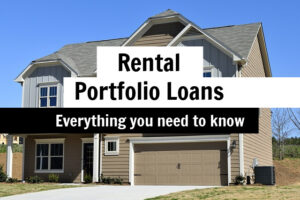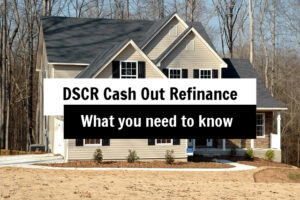A blanket loan gives the opportunity for a growing real estate investor to bulk finance their portfolio. These investment property loans can be done on the purchase of new rentals, and refinance of existing property.
Great, but why would an investor want to have all or some of their rental properties wrapped up into one mortgage?
What is the advantage of a blanket loan?
In case you have been living under a rock since the crash in 2007, I’ll fill you in a bit on what’s it’s like to finance a rental property the old fashion way. (Don’t get me wrong, I love what I do, but the government regulation involved can be a bit daunting sometimes.)
When looking at getting investment property loans in the mainstream mortgage market, here are some challenges that are often faced:
- Personal income issues
- Personal credit issues
- Number of financed properties
- Property type restrictions
- Property condition issues
- The list goes on
What it boils down to is that the mortgage world is extremely regulated. From having to re-disclose a loan package within a certain number of days every time a loan officer sneezes, to having to get a letter of explanation for nearly every life event in the most previous two years. Okay, that might be a bit of an exaggeration. But the point is, getting a regular mortgage is not as simple as it once was.
So imagine getting 5, 10, 15 loans individually within a 3-6 month period. That means your entire portfolio is re-reviewed each time, possibly by a different underwriter.
Yeah, no thanks.
For bulk scenarios like this, a blanket loan is probably the best option in terms of sanity and simplicity.
Sanity; because it’s all done in one approval process.
Simplicity; because the approval is based on property cash flow and equity, NOT personal income and credit (although good credit is always helpful when being considered).
This is a commercial loan, so the property performance is evaluated more heavily than the investor’s personal situation.
Typical requirements on a blanket loan.
- At least 5 properties included in the loan.
- Minimum loan amount is usually 300K.
- Rental income must cover payment as well as other expenses like taxes, insurance, association dues, etc. Up to 20% vacancy factor may be applied.
- Units must be 90% occupied.
- No vacation rentals. Minimum leases need to be at least 6 months in length.
- Close in an LLC.
- Must have at least 2 years property management experience.
Of course, there are more guidelines in order to qualify. Every deal is evaluated individually, this is meant to give a brief snapshot of what to expect.
Typical structure of a blanket mortgage.
- Maximum 75% loan-to-value.
- Can be done on purchase, rate and term refinance, and cash-out refinance.
- Typically done on 5 or 10 year balloon (amortized over 30 years).
- 30 year fixed available in some cases.
How to apply for a blanket loan?
You can start by filling out this rent roll. By completing it in full you’re really able to provide a full picture for the potential deal to be evaluated and priced out. Depending on the complexity of the scenario it can take 48 hours to a week to get a response on if it can be done and what the terms might look like.
At that point, you can review the blanket structure and decide if this type of loan meets your needs.
More portfolio loan resources here.
What are some alternatives to bulk financing?
Full doc loan
This is where your income/credit/assets are evaluated in full. This can be done on a case-by-case basis up to 10 properties financed (down payment and pricing varies after 4 properties are financed).
The concern with going this route is that the properties you are potentially buying or refinancing might recently bought/renovated/flipped. When dealing with flips, it can be tricky to get an acceptable value (example: it was bought 3 months ago for 20K, renovated, and now is being sold for 110K). That’s an extreme example, but the point is that it can be a challenge to have acceptable value on collateral if the price isn’t justified in detail. Yes, that can be a challenge in any scenario, but when you’re doing a full doc loan it can be even more of a hurdle.
When looking at these opportunities, be sure to get info on when the properties were purchased. If they were originally purchased at heavy discount within the last 12 months then it would be good to know exactly what renovations were made so that value can be justified.
Individual Investor Cash Flow Loan
These loans are designed to cater to investors who would prefer a more simplified approach when it comes to approval.
Credit is pulled, we do verify assets, but we do not get docs on your personal income (no tax returns, no paystubs, etc). The deal is evaluated on the cash flow of the property and equity. We can go up to 80% LTV on these (on a 15 year fixed), or up to 75% LTV (on a 7/1 ARM or 5/1 ARM). The 15 year fixed is a nice option, but it can have an impact on the cash flow, so it doesn’t always work out when structuring it on a 15 year.With this type of loan there is no max number of financed properties.
For cash flow we take into consideration the current lease on the property (if applicable), and we get a 1007 rent schedule completed by the appraiser to tell us what the fair market rent is. From there we factor in mortgage payment, taxes, insurance, and homeowners association dues (if applicable). If the fair market rent covers those items and other annual expenses when applicable, we’re good (minus 20% vacancy factor). [more on this here]
Keep in mind
that there are typically reserve requirements in most cases. “Reserves” as in liquid assets left available after down payment, costs, escrows are paid at closing. Typically you’ll need 6-12 months reserves for the subject property. Example: the payment on the subject property is 950/month, you’ll likely need 11,400 in reserves.
In some cases, in addition to the reserve requirement on the subject property, you’ll need an additional 2 months reserves for all other financed properties. I think it’s imperative to communicate this because the reserve piece is often ignored by many investors. You obviously don’t want to overextend yourself when making a purchase, and disregard the need for reserves. When that happens, things tend to fall apart.
Pay cash
Liquidate your assets and run the show. Even well healed investors don’t typically pay cash unless they have to because, as they say, cash is king. When you use up a substantial percentage of your funds to acquire a property, the pressure tends to be more stressful.
Hard Money Loan
These are great options if the property is in serious disrepair or if you need access to capital quickly. The luxury of speed typically comes with an aggressive price up front and monthly.
There are a number of ways to acquire more real estate and grow your portfolio. A blanket loan is just another tool in the box to help accomplish your goals.
They aren’t for everyone, but a blanket mortgage does prove to be a valuable resource for many growing real estate investors.
I invite you to reach out.

If I’m unable to help, I can most likely point you in the right direction at the very least. All the best!











What questions do you have?